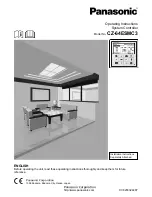
■■■■■■■■■■■■■■■■■■■■■■■■■■■■■■■■■■■■■■■■■■■■■■■■■■■■■■■■■■■■■■■■■■■■■■■■■■■■■
▼
Signal Connection to External Devices
DS1104 Hardware Installation and Configuration March 2004
151
▲
■■■■■■■■■■
I
▲
■
■■■■■■■■■■■■■■
N
Do not connect the shield to the GND pins of the dSPACE
system.
Connecting shield to
the external device
At the other end, the shield should be connected directly to the
sensor/actuator housing. Sometimes sensors and actuators have
dedicated shield pins available at their connector. The idea is to form
one closed shielding cage consisting of the cable shield and
sensor/actuator enclosure, which is ideally nowhere connected to
signal ground. Use a large area connection and avoid pigtails.
Avoiding Crosstalk
Crosstalk occurs if a signal with steep edges runs close to a high
impedance analog signal. The main reason for crosstalk is inductive
coupling. It can be reduced by the following measures:
■
Twist each signal line with its return line (ground).
■
Never twist two signal lines.
■
Separate digital and analog signal lines. Keep fast-changing signals
far away from analog inputs.
■
Avoid connecting high-impedance sources to the inputs of the
dSPACE boards.
■
If you use multiconductor cables, the individual twisted pairs
should be shielded.
■
You should also note the advice in
Wiring Up External Devices
on
page 152.
Summary of Contents for CLP1104
Page 6: ...Contents DS1104 Hardware Installation and Configuration March 2004 I 6 ...
Page 20: ...Safety Precautions DS1104 Hardware Installation and Configuration March 2004 I 20 ...
Page 118: ...Mapping of I O Signals DS1104 Hardware Installation and Configuration March 2004 I 118 ...
Page 162: ...Data Sheets DS1104 Hardware Installation and Configuration March 2004 I 162 ...
















































